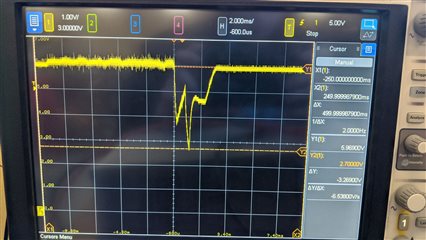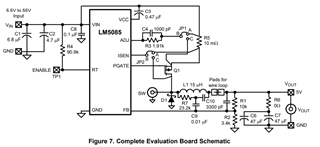I am using a circuit generated by Power Designer in a circuit board intended to drive several hobby-type servos, for use in robotics teaching labs.

The problem I am having is really big voltage drops, presumed to be associated with the inrush current of the servos. Since they are digital servos, a big transient voltage drop can be enough to make the internal controller brown out, and the servo fails to move properly.
I am stepping down from 24V to 6V, and viewing the output on an oscilloscope shows the voltage can drop as low as 2.7V with a single servo (TowerPro MG996R), and I need to drive at least 4 of them.

Adding more capacitance helps a bit, but nowhere near enough. My feeling is that the source of the problem must be more fundamental than that, but, not being remotely a power design expert, I'm at a loss to know what could be going wrong and how to fix it. I'm also under intense time pressure and need to find a solution within the next day or so. I would hugely appreciate any advice that you could offer


